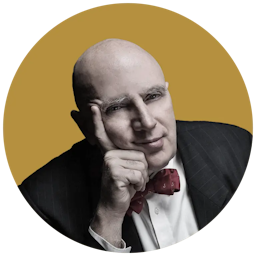Hot Fun in the Summertime
This article is from the archive of The New York Sun before the launch of its new website in 2022. The Sun has neither altered nor updated such articles but will seek to correct any errors, mis-categorizations or other problems introduced during transfer.

For its first 20 years, the annual Jazz in July series, under the artistic direction of its founder, Dick Hyman, was a rigidly programmed affair designed to bring jazz to an intellectually curious but essentially non-jazz audience. Both enlightening and entertaining, the concerts generally stressed presentation over improvisation.
These days, under the direction of another virtuoso pianist, Bill Charlap, who is exactly half Mr. Hyman’s age (and a distant relative, as it happens), the focus of Jazz in July is gradually shifting, with the emphasis more on modern jazz than swing or traditional. There’s also more attention paid to the Latin Tinge (last year it was the Brazilian bossa nova, next Thursday it’s the Cuban salsa), even though Mr. Charlap continues the older and still worthy tradition of building shows around the composers of the Great American Songbook.
As Thursday night’s program at the 92nd St. Y, “Bird & Diz: Bebop Today” illustrated, Jazz in July, at least on certain nights, is increasingly becoming a kind of jam session, even though, unlike in a New York club, the solos are contained and no one is likely to tear off on a marathon statement. Within Mr. Charlap’s eloquent, concise introductions (he’s no Phil Schaap), both the theoretical and the historical implications of bebop were addressed, and the music served to illustrate his points nicely.
One issue that Mr. Charlap didn’t mention on Thursday, but which came through in the music, was that in the day of Charlie Parker and Dizzy Gillespie, jazz was a heavily ensemble-based format, a music of composers and companies; it was the generation that followed, the era of Miles Davis and JohnColtrane, thatsteered everything into the realm of one solo after another. But in this program of bebop, as re-created by Mr. Charlap and company, the opening melodies were deftly rehearsed and movingly played. Each was treated as a genuine composition, not a mere “head” meant to be chopped off as soon as possible in order to get to the solos.
Perhaps in subtitling the show “Bebop Today,” Mr. Charlap was telegraphing another one of his intentions, unannounced at the actual performance, to herald a new vanguard of this form of jazz. There are still active survivors of the early years of modern jazz (James Moody and Phil Woods are featured elsewhere in the Y series) such as Jimmy Heath, Clark Terry, and Slide Hampton, and there are many veterans of the 1950s jazz scene who survived the drug epidemic of that generation and are still playing brilliantly.
Contrastingly, the whole 92nd Street Y cast consisted of players of Mr. Charlap’s approximate age, mostly in their early 40s. The excitement of the music never let up, but after a while there was a certain sameness to it that might have been broken up with the help of a few elder statesmen. Tellingly, the previous night’s evening of Cole Porter selections was less predictable; even if you knew which very familiar songs the company was going to play, the constantly changing lineup of players from different backgrounds and era, and use of varying time signatures and rhythms provided a more varied mix.
“Bebop Today” alternated between two working bands, beginning with Mr. Charlap’s trio (with the bassist Peter Washington and the drummer Kenny Washington — one of the best jazz groups of the current generation) with two guest horns (the alto saxophonist Jon Gordon and the trumpeter Jim Rotondi), in the classic Parker-Gillespie quintet lineup. The fivesome tore into two variations on standards: Gillespie’s “Groovin’ High” (“Whispering”) and Parker’s “Anthropology” (the only number of the evening to employ the “I Got Rhythm” chord changes). Mr. Rotondi, who is a trumpeter well worth paying attention to, consistently nailed Gillespie’s bright, extroverted tone.
The second group was the sextet One for All, which began its subset with Parker’s B-flat blues “Bloomdido.” The group has recorded more than a dozen albums (many for foreign labels) in the past decade, and all of its members are virtually house musicians at the club Smoke on West 106th Street, including Peter Washington on bass, Mr. Rotondi, Eric Alexander on tenor saxophone, Steve Davis on trombone, David Hazeltine on piano, and Joe Farnsworth on drums.
Both groups illustrated the importance of working together consistently: As good as the opening quintet sounded, with the two visiting horns, it got noticeably better when the core Charlap Trio took over. The three musicians, who know each other so well, were able both to relax more and swing harder as they breathed together collectively.
One for All also made a tight and impressive entrance on “Ornithology” — the most famous of all “How High the Moon” variations — particularly Mr. Alexander, who generally plays with a touch of a Coltrane-ish tone, but here, sticking to the period, showed more of a Dexter Gordon influence.
The evening’s second half opened with several songs by Tadd Dameron, an enormously influential composer who is due for a full-length retrospective, including “Tadd’s Delight” and “If You Could See Me Now.” The latter was one of a series of slower ballads spotlighting individual horns, this time Mr. Alexander, following Mr. Gordon on a Bird-like “Embraceable You” and preceding Mr. Rotondi on Gillespie’s neglected ballad “I Waited for You.” Along the way, they stopped at “Manteca,” as rearranged by Cedar Walton, and a quick, themeless “Woody ‘n’ You” as a finale.
The most surprising guest appearance was that of Mr. Hyman himself, as projected in a film clip playing “Hot House” with Charlie Parker and Dizzy Gillespie in 1951. Seeing the 24-year-old Mr. Hyman, who turned 80 a few months ago, back at Jazz in July, even twodimensional, was a reminder that some things never change.

